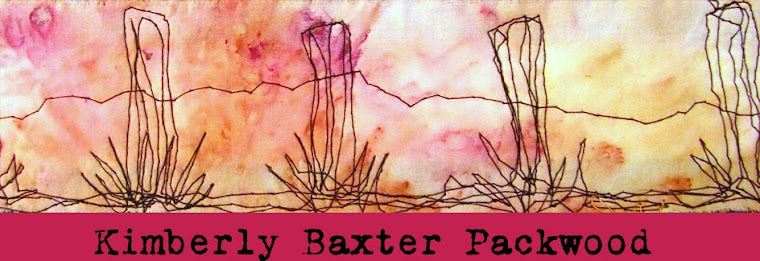Q. What is the most unique/rare color that you
can make naturally?
· The most “unique” color I make with
plants is indigo! It starts out as
leaves that are composted with urine, wheat bran and madder root in order to
break down the leaf cells so that the blue pigments can be extracted from the
leaves. Indigo is often referred to as a
dye but chemically speaking it’s a pigment, not a dye molecule. The difference is pigments sit on the fibers
surface, dye molecules bond with the fibers surface.
· To get a good blue on fabric using
indigo I usually dip the fabric into the dye bath at least six times. Each time I dip my fabric into the indigo vat
I do so carefully so as to not introduce air into the vat, air will prevent the
dye vat from turning blue. I then gently
and quickly remove my fabric and hang it up to dry, this allows the yellowish
green indigo pigments on the fabric to oxidize and then turn blue. Once it’s dry I rinse it and then put the
fabric back into the indigo vat. With each
dip, and oxidation, the fabric become a darker blue, this is how your blue
jeans have been dyed.
· A local rare color for me is blue
from maple leaves. The blue that comes
from the maple leaves depends entirely on the weather and time of year the
maple leaves are picked for dyeing, if the conditions are right I can soak the
leaves in an old bucket with some rusty objects (make sure you wear gloves if
you do this) and leave it to soak for several days. When the maple leaf dye is heated a blue
color is extracted from the leaves, I use red or black maple leaves. The process does not work if you don’t have
rusty objects soaking with the leaves. The blue color happens when the tannins in the
leaves react with the iron in the water.
When you use red or black maple leaves you will get a brighter blue than
if you use other maple varieties.
· You can use oak leaves with iron,
rusty objects, but it yields a greyish blue not a real blue like the red maple
leaves do. The grey extracted from oak
leaves was used to dye military uniforms during the Civil War.
Q. What
inspired you to continue further into this project and become an expert?
· I became interested in dyeing with natural
dyes after having a severe allergic reaction to synthetic dyes in 1994. I had been dyeing my own fabric for my art
quilts and artwork, and didn’t want to give that up. Once I learned how the basics to natural
dyeing I began pushing the processes even further to see what the dyes could
and could not do, especially on cotton fabrics.
Q. What
tools do you use to help make natural dyes and paints?
· I use basic kitchen equipment that is
dedicated to studio use only, for safety purposes. I use a stainless steel pot when I need to
cook/simmer the roots, leaves, etc., to extract the dyes for dyeing fabric
with, a stainless steel spoon, pantyhose for putting the roots, etc., into so
that they are easy to remove from my dye bath.
And a food scale if I need to weigh something, I recommend the one used
by the Biggest Loser.
· For the paints, which I make using
clays, ochers, dirt, etc., I use soy milk and paper cups and a plastic spoon
for mixing, since the pigments want to stick to everything.
· I also have a clothesline to hang my
wet fabric on, when I’m curing it, this makes it much easier to keep the colors
from pooling on the fabric.
Q. As a painter do you have to use a different
material for natural paints?
· Yes I use a couple of different bases
when I’m painting with natural paints it depends on whether I’m using dyes or
pigments.
· Dye extracts are mixed with water and
gum tracanath (a natural thickener) for paintingfabrics, earth pigments are
mixed with soy milk for painting fabrics.
Q. What is the trickiest color to make?
· Black! I start by dyeing my fabric with indigo,
usually six dips, then over dye it with cochineal, or madder root, and then
over dye that fabric with weld to acquire black. Sometimes I also have to over dye with walnut
and add iron to the dye bath if the black needs to be a darker value.
Q. Is there
any color that cannot be made by natural dyes and paints?
· Not to my knowledge, every color on
the color wheel can be obtained by starting out with a base color and then over
dyeing it with another color to achieve a desired color.
If you have
any more questions feel free to ask.

1 comment:
That is very interesting. I have never heard of a blue from maple leaves. Thank you for sharing. That is a very interesting interview.
Post a Comment